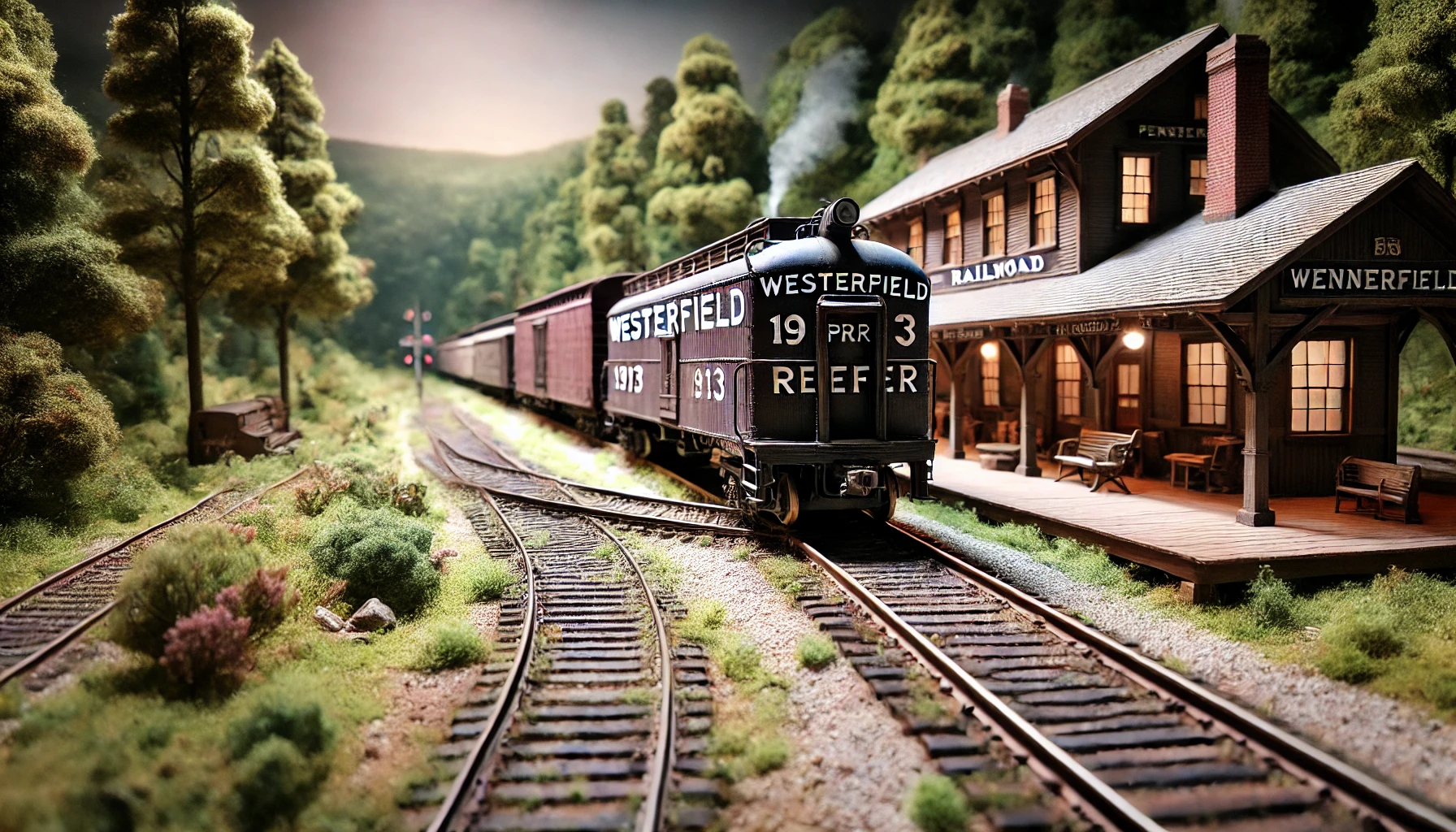The Westerfield HO 1913 PRR Reefer is a prized gem for railroad modelers and history enthusiasts alike. This model stands out for its incredible attention to detail, historical authenticity, and the opportunity it provides hobbyists to relive a golden era of rail transportation. In this article, we will explore everything you need to know about this iconic model, from its historical background to its detailed components and customization potential.
A Historical Overview of the 1913 PRR Reefer
The Pennsylvania Railroad’s R7 class refrigerator car, introduced in 1913, revolutionized the transportation of perishable goods. These cars were designed to maintain a stable, cool environment for shipments like fruits, vegetables, and meats. With the rapid expansion of rail networks, the R7 reefer played a crucial role in connecting farms, markets, and urban centers, ensuring fresh produce reached consumers across the country.
The Westerfield HO 1913 PRR Reefer replicates this historical marvel with precision. For modelers, it serves as a tangible link to the early 20th-century industrial era, where railroads dominated logistics and commerce.
The Craftsmanship Behind Westerfield HO Models
Westerfield kits are renowned for their exceptional craftsmanship, and the Westerfield HO 1913 PRR Reefer is no exception. This model showcases the meticulous design that has become synonymous with the brand.
Resin Construction for Realism
The kit is crafted from resin, a material known for its ability to capture fine details. This ensures an accurate representation of the original R7 reefer’s structural elements, including its riveted panels, sliding doors, and roof details. The resin construction also provides durability, making the model a long-lasting addition to any collection.
Authentic Detailing
From the brake system to the undercarriage, the Westerfield HO 1913 PRR Reefer features an array of intricate details. The inclusion of realistic sliding doors and finely modeled roof paneling enhances its authenticity, making it a standout piece in any HO-scale layout. These elements reflect the car’s true function and design during its operational years.
Customization Opportunities for Modelers
One of the most exciting aspects of the Westerfield HO 1913 PRR Reefer is the freedom it gives hobbyists to make the model their own. Customization allows modelers to tailor the car to match specific historical periods or personal preferences.
Painting and Weathering
To achieve an authentic appearance, modelers can paint the reefer in traditional Pennsylvania Railroad colors, such as Tuscan red or boxcar brown. Weathering techniques, like adding rust streaks or dirt accumulation, can further enhance its realism by mimicking the wear and tear seen on operational reefers.
Decals and Lettering
The model provides ample opportunities for personalization with decals. Modelers can use PRR-specific logos and lettering to create a historically accurate design or replicate a specific car from the railroad’s extensive fleet.
Adding Historical Context to Layouts
Including the Westerfield HO 1913 PRR Reefer in a model train layout adds depth and authenticity, particularly for scenes set in the early 20th century. These cars were a common sight on the Pennsylvania Railroad, making them an essential addition for layouts depicting this era.
Whether integrated into a bustling freight yard or traversing countryside tracks, the model captures the spirit of early rail transportation. It not only enriches the visual appeal of a layout but also serves as a conversation starter about the evolution of refrigeration technology and its impact on commerce.
Why Hobbyists Love the Westerfield HO 1913 PRR Reefer
The Westerfield HO 1913 PRR Reefer has earned high praise from hobbyists for its balance of historical accuracy and build quality. Building this kit is a rewarding experience, providing modelers with a sense of accomplishment upon completion. The model’s durability ensures that it remains a treasured part of any collection for years to come.
Many enthusiasts appreciate the opportunity to learn about railroad history while working on this model. The detailed instructions included in the kit make it accessible even to those new to resin modeling.
FAQs About Westerfield HO 1913 PRR Reefer
What makes the Westerfield HO 1913 PRR Reefer unique?
The model’s resin construction and intricate detailing make it a highly realistic representation of the original Pennsylvania Railroad R7 class refrigerator car.
Is the Westerfield HO 1913 PRR Reefer suitable for beginners?
While the kit includes detailed instructions, its assembly requires patience and some modeling experience, making it more suited to intermediate and advanced hobbyists.
How can I customize my Westerfield HO 1913 PRR Reefer?
You can paint it in authentic PRR colors, apply weathering techniques, and add decals to create a historically accurate or personalized version.
What historical period does the model represent?
The model depicts the Pennsylvania Railroad’s R7 reefer, introduced in 1913, and is ideal for layouts set in the early to mid-20th century.
Why is resin used for this model?
Resin allows for precise detailing that captures the intricate design of the original refrigerator car, providing a realistic and durable model.
conclusion
the Westerfield HO 1913 PRR Reefer is a must-have for model train enthusiasts and history buffs alike. Its impeccable detailing, resin craftsmanship, and endless customization possibilities make it an exceptional representation of the Pennsylvania Railroad’s legacy. Whether you’re building a historically accurate layout or simply enjoying the artistry of a well-crafted model, this kit offers a rewarding experience that combines creativity with a tangible connection to the past. Adding this reefer to your collection is not just about owning a model—it’s about preserving a piece of early 20th-century railroad history.







